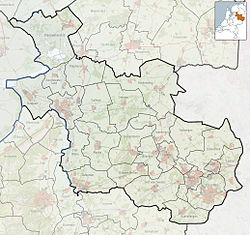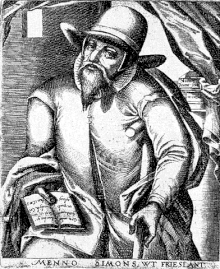
Overijssel is a province of the Netherlands located in the eastern part of the country. The province's name translates to "across the IJssel", from the perspective of the Episcopal principality of Utrecht by which it was held until 1528. The capital city of Overijssel is Zwolle and the largest city is Enschede. The province had a population of 1,162,215 as of November 2019. The land mostly consists of grasslands and some forests ; it also borders a small part of the IJsselmeer to the west.
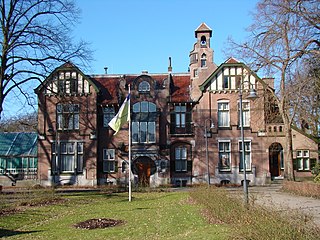
Steenwijkerland is a municipality in the province of Overijssel, in the eastern Netherlands. Prior to a name change in 2003, it was known as Steenwijk.

Blokzijl is a small city located southwest of Steenwijk in the province of Overijssel, the Netherlands. The city is a major tourist destination near the De Weerribben-Wieden National Park and attracts many water sports enthusiasts.

Vriezenveen is a town in the municipality of Twenterand in the Dutch province of Overijssel. The population was 13,800 on January 1, 2020.
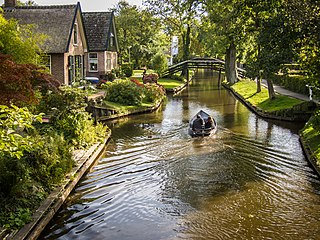
Giethoorn is a village in the province of Overijssel, Netherlands, with a population of 2,795 in 2020. It is located in the municipality of Steenwijkerland, about 5 km (3.1 mi) southwest of Steenwijk. As a popular Dutch tourist destination both within the Netherlands and abroad, Giethoorn is often referred to as "Dutch Venice" or the "Venice of the Netherlands".
The Batenburgers were members of a radical Anabaptist sect led by Jan van Batenburg, that flourished briefly in the 1530s in the Netherlands, in the aftermath of the Münster Rebellion. They were called Zwaardgeesten (sword-minded) by the nonviolent mainstream Anabaptists.

Nieuwleusen is a town in the Dutch province of Overijssel with 9300 inhabitants as of 2021. In the 2001 municipal reform, most of the former municipality of Nieuwleusen was incorporated into the municipality of Dalfsen. Some parts of the former municipality, including the Lichtmis area, was added to the neighbouring municipality of Zwolle.

Steenwijkerwold is a village in the Dutch province of Overijssel. It is located in the municipality of Steenwijkerland, about 5 km northwest of Steenwijk. Steenwijkerwold was a separate municipality until 1973, when it became a part of Steenwijk.

Wanneperveen is a village in the Dutch province of Overijssel. It is located in the municipality of Steenwijkerland, about 4 km west of Meppel.
Cornelius Nicolaas Petrus Wessels was a Dutch Jesuit, known for his historical works on the early Catholic Missions in Central Asia, specially Tibet, and in the East Indies.
Nicolaas Bidloo was a Dutch physician who served as the personal physician of Tsar Peter I of Russia. Bidloo was the director of the first hospital in Russia as well as the first medical school in Russia, and is considered one of the founders of Russian medicine.

Cornelis Pronk, also known as Cornelis Pronck, was a Dutch draughtsman, painter and porcelain designer. He is known particularly for his numerous drawings of cities, towns and buildings, as well as for his porcelain designs.

The Mechelen-Zuid water tower is a 143-metre-high (469 ft), combined water and telecommunications tower constructed in 1978. Since 1979, it has supplied the water to the city of Mechelen, Belgium, while also hosting television and telecommunications aerials. The concrete spire passes through a wide disc holding water fifty metres above the ground. Higher up, a smaller disc supports telecommunications equipment. Topped by a decorative stainless steel tube, it is claimed to be the highest water tower in the world.

Abraham de Vries was a Dutch Mennonite minister, author on literature and member of several societies.
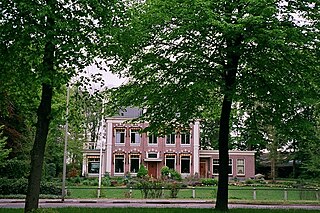
Den Hulst, spelled at times De Hulst and traditionally pronounced Nulst locally is a historical Dutch hamlet which was incorporated into the village and municipality of Nieuwleusen. The northern part of Nieuwleusen is known as Den Hulst to this day.
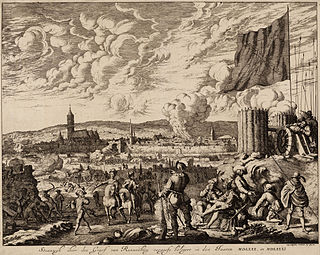
The siege of Steenwijk took place from October 18, 1580 – February 23, 1581 during the Eighty Years' War and the Anglo–Spanish War, between a besieging Spanish force under turncoat George van Lalaing against a Dutch rebel garrison at Steenwijk under Johan van den Kornput. An English and Dutch rebel force under John Norreys successfully relieved the town on January 24, and the Spanish in addition to ill-health and lack of supplies subsequently lifted the siege in February.

The siege of Steenwijk was a siege that took place between 30 May and 5 July 1592 as part of the Eighty Years' War and the Anglo–Spanish War by a Dutch and English force under Maurice of Orange. By taking Steenwijk the Republic's army would take out one of the two main transport routes overland to the Drenthe capital of Groningen, the other lay at Coevorden. After a failed bombardment, an assault was made in conjunction with the detonation of mines under important bastions, and with two out of three successfully assaulted, the Spanish troops surrendered on 5 July 1592 and handed over the city to the Dutch and English army. This siege was one of the first in history to make use of pioneers as a separate military unit although they were still at the time regarded as soldiers.

Tuk is a village in the municipality of Steenwijkerland in the province Overijssel, Netherlands. It forms a single urban area with Steenwijk
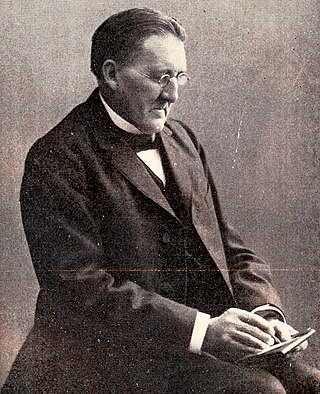
Jacob Cornelis van Slee (1841–1929) was a Dutch Reformed clergyman and scholar. He was the author of a study of the Windesheim Congregation, De kloostervereeniging van Windesheim, and between 1875 and 1900 contributed articles on theologians to the Allgemeine Deutsche Biographie.

Pieterzijl is a village in the municipality of Westerkwartier in the province of Groningen in the Netherlands. As of 2021, it had a population of 170.


